

Henrik Axel Kulle (22 March 1846, Lund - 27 February 1908, Stockholm) was a Swedish painter who specialized in genre scenes. [1]


Henrik Axel Kulle (22 March 1846, Lund - 27 February 1908, Stockholm) was a Swedish painter who specialized in genre scenes. [1]
His father was a brewer and innkeeper. His older brother, Jakob Kulle (1838–1898) was also a painter and his younger brother, Sven Kulle (1860-1945) was a medalist. [2] [3]
He was apprenticed to a local painter. In 1865, enrolled at the Royal Swedish Academy of Fine Arts where he studied until 1872. He returned to Lund the following year and was able to sell some paintings to the local Art Society. In 1875, he left home for Düsseldorf, where he studied with Swedish-German genre painter Ferdinand Fagerlin. He introduced Kulle to the work of the Düsseldorf School. In 1877, Kulle sent home a painting, "The Church Council in Skåne" that was bought by the Nationalmuseum. [4]
In 1880, he received a scholarship from the Dahlgrenska Foundation (Stiftelsen Dahlgrenska fonden) in Strömstad and moved to Paris. He remained there for three years, painting en plein aire and developing a brighter color scheme. When he returned to Sweden, he continued to paint genre scenes, but also created portraits and still-lifes. [5]
In 1885, he was one of the signatories to a document drawn up by the group known as the opponents (Opponenterna), a group of 85 artists who opposed the teaching methods at the Royal Academy and were in favor of modernization. Despite this, in 1887 he was named a representative member (ledamot) of the Royal Academy and began teaching there. From then until 1892, he also gave private drawing and painting lessons. From 1891, he was accredited to teach the drawing of ancient artifacts (antikritning) . The artist, Rikard Lindström (1882-1943) one of his last students, recalled him in his old age as a man who always dressed very formally and said as little as possible. [6] [7]
His works may be seen at the Nationalmuseum, Göteborgs konstmuseum, Lunds universitets konstmuseum and the Kulturhistoriska museet in Lund.

Ernst Abraham Josephson (1851-1906) was a Swedish painter and poet. He specialized in portraits, genre scenes of folklife and folklore.
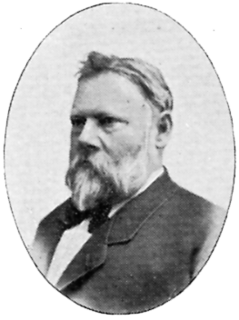
Mårten Eskil Winge was a Swedish artist. He was a professor at the Royal Swedish Academy of Arts. He was associated with the Düsseldorf school of painting. His art was influenced by the Norse mythology themes also found in works by Nils Blommér (1816–1853) and Carl Wahlbom (1810-1858).

David Krafft, from 1719 David von Krafft was a German-Swedish painter, the nephew and student of David Klöcker Ehrenstrahl and his successor as painter to the Swedish Royal Court.
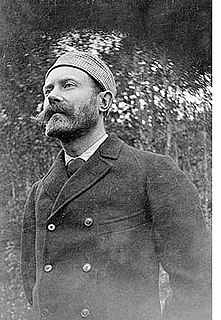
Karl Fredrik Nordström was a Swedish painter who specialized in landscapes. From 1896 to 1920, he was Chairman of the Association of Artists (Konstnärsförbundet).

Sven Richard Bergh (1858–1919) was a Swedish painter, art critic and museum manager. Despite many years in France, he remained unattracted to Impressionism, preferring instead the Naturalism of painters such as Jules Bastien-Lepage. He also rejected the idea of creating landscapes en plein aire.

August Jernberg was a Swedish artist. He was a member of the Düsseldorf school of painting.

Kilian Christoffer Zoll was a Swedish painter, graphic artist and illustrator in the style of the Düsseldorf School. He created genre scenes, landscapes, altarpieces and portraits.

Carl Ludvig Trägårdh was a Swedish painter.
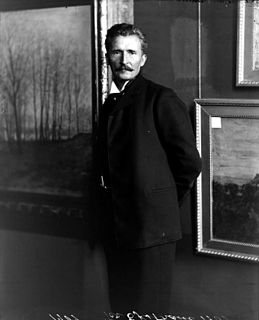
Per Ekström, also Pehr or Peter was a Swedish landscape painter, known for his atmospheric scenes with sunsets, in barren or deserted places.

Olof Arenius was a Swedish portrait painter.
Jakob Björck was a Swedish portrait painter and copyist.
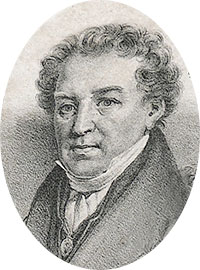
Carl Johan Fahlcrantz was a Swedish painter.

Agnes Fredrika Börjesson, sometimes called Agneta, was a Swedish painter who specialized in genre and historical scenes.

Gustaf Wilhelm Palm was a Swedish landscape painter and art professor.

Ferdinand Julius Fagerlin was a Swedish-German genre painter.
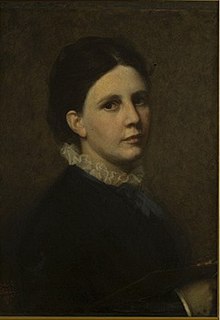
Sofie Amalia Ribbing was a Swedish painter of the Düsseldorf School. She specialized in portraits and genre scenes, often placed in family settings.

Axel Wilhelm Nordgren was a Swedish landscape painter.

Olof Per Ulrik Arborelius was a Swedish landscape and genre painter. He served as a Professor at the Royal Swedish Academy of Fine Arts from 1902 to 1909.

Edvard Perséus, originally Persson was a Swedish painter and "hovintendent" at the Royal Court of Sweden. He specialized in historical and genre scenes.

Per Daniel Holm was a Swedish landscape painter.
| Wikimedia Commons has media related to Axel Kulle . |